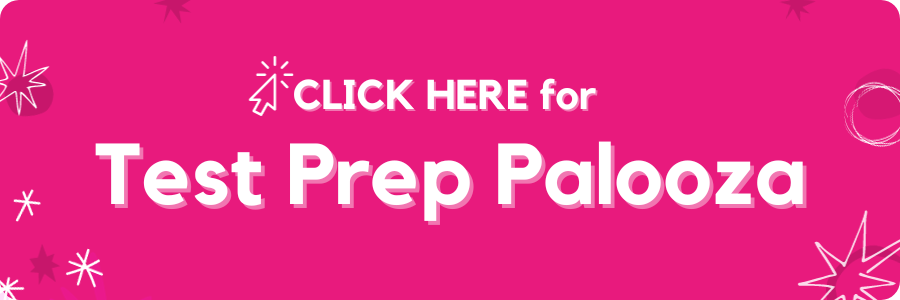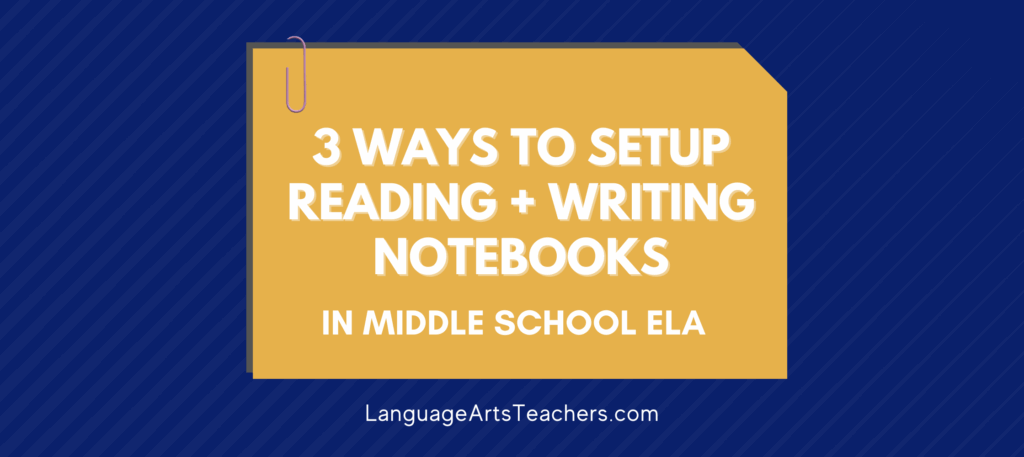(1) Using PearDeck with Google Slides… Game changer! You get to see what everyone knows, not just the only two kids willing to answer.
→ It’s an add-on that lets you add a variety of questions (multiple choice, short answer, “drawing”, etc).
Students login to the presentation on a computer (similar to how they login to Kahoot if you use that) and they can only see the slide you want them to see.
They can even annotate small sections of text for specific info (main idea, supporting details, etc). In the actual classroom, you can project their answers onto the board (and they can “decorate” their answers if they finish early so there’s always something to do).
(2) What do you do when your students say, “I don’t get it” about something they’re reading & responding to (which means engagement is about to drop to zero if it hasn’t already)?
I used to respond ASAP by asking, “Which part do you not get?” All that did was initiate a response like, “All of it” which then turned into a back-and-forth situation — a power struggle we don’t want!
Here’s something that works much better AND saves time. Ask the following questions:
Will you read the question out loud? (This forces the student to slow down and actually read the question. Plus, for some students, hearing it out loud assists with comprehension.)
So… What does it sound like you have to do? (This helps the student think about what the question is asking and basically put the question into his/her own words).
Where will you have to look to find the answer? Which part of the selection do you think you have to look in? (This empowers the student to take his understanding of the question and really think about where to go to find the answer or the text evidence to support his answer).
I love those 3 questions above because it puts the work back on the student so the student MUST do the heavy lifting.
What are some other ways to respond to the whole “I don’t get it thing?”
(3) Reading a novel or short story? Try THIS to uplevel the engagement!
In a section or chapter with really intense or important dialogue, read it aloud and talk about tone (not what you say but how you say it) and how writers create tone along with what tone reveals about characters’ feelings, etc.
THEN have students try this, too, where they read aloud a line or a section in a couple different ways to think about how tone impacts meaning.
Questions for discussion:
– Are we all hearing the same tone in this part?
– What words are we using to describe the tone?
– Could misunderstandings or new meanings surface based on the change in tone from how one group reads the conversation vs. how another group reads it?
(4) Teaching “traditional” vocabulary?
Here are a couple of engaging ways to get students using their new words all the time so it’s not just wasted or forgotten!
1) Give them a partner or small-group challenge where they have like four minutes to use all the new words in a sentence. Or in two sentences. And yes, tell them it has to make sense and that they have to use context clues to prove they know the meanings. It’s ok to be silly, though. Then let them read those sentences aloud (if they wish). Even if the group didn’t get to finish by the time the four minutes has passed, let them share what they had so far. Always have them throw in one or two old words, just to keep those words fresh. So yeah, they’ll have like four minutes to make up a sentence or two in which they use like all ten of their new words plus one or two of their old words. It’s pretty fun to see what they come up with, and it’s a quick, zero-prep way to get your students thinking and working.
2) Always, always, always have students choose a word or two to include in anything they have to write for class. So for example… You have them write a quick response to something they just read or discussed. Make them choose even just one vocabulary word to put in that written response somewhere. Train them to hi-light or circle it every time. It could be a new one or an old one to use. Doesn’t matter. Let them refer to their vocabulary notes and flip through them to find something that fits. Plus, that keeps them in the habit of actually using their notes in a meaningful way.
(5) When you need high engagement on those goofy days where you have an early release, or when the students have been testing all day and are just DONE…
Try FINGERPRINT POETRY!!!

Students use an ink pad to make a print of one finger
Blow it up / enlarge it / zoom in on it
Trace the lines in light pencil
Copy the words of a favorite poem or one they wrote
Follow the lines of the finger print
Keep words / lines close together to maintain the design
Use colors strategically to maximize meaning & impact
(6) “Act this out in 20 seconds!”
Up the engagement by telling your students (groups or partners) that they get 20 seconds to act out something they’ve read / have been reading.
You can tell them before or after the reading selection, too!
Either they’ll know to look for important, meaningful quotes or lines as they go, or they can go back and re-read to find those pieces!
With only 20 seconds to act out an entire novel, or a chapter, or a long narrative poem, or a short story, it’s definitely engaging because they’ve really got to think about the big ideas, the big take-aways, the main aspects of the selection since they can’t possibly include everything.
They can easily spend 15 minutes prepping for a 20 second performance, too! But that’s 15 minutes of close-reading, re-reading to find just the right parts, all the things we want them doing anyway.
Plus, it’s interesting to see which lines or parts or sections each group chooses to include (the “why” behind it all makes for some fantastic discussion).
(7) How can you combine or “batch” skills so that you’re taking up fewer papers and actually grading less while engaging your students creatively?
Deeper, more engaged thinking is the goal.
Check out this— In the image below, students shut down their devices and technology and had to get hands-on creative by thinking of and writing their own sentences to include the following:
1) Various types of sentence structures
2) New vocabulary terms
3) Prepositions; prepositional phrases

It’s all done on one paper, underlined or otherwise marked in some way so the teacher’s eyes are drawn to just the right parts, and it actually took the students some time and critical thinking (and a little bit struggle!) to make it all happen!
The goal is to think about other things you can assign that requires the batching of skills so students are more deeply engaged (rather than working through one-off isolated skills)
(8) Instead of worksheets based on reading passages, consider alternative ways to engage students in fiction, nonfiction, and poetry.
Click Here for six ways to engage students in reading and interacting with poetry.
Click Here for a set of engaging questions for nonfiction texts, plus four options for use.
Click Here for a set of engaging questions for fiction texts, plus four options for use.
Related to engagement strategies is Test Prep, which doesn’t have to be (nor should it be) an awful series of nonstop worksheets or old tests. Join us for the one & only virtual test prep event to help Middle School Reading + Writing Teachers review for “The Test” in an engaging, interactive way without feeling like you’re actually reviewing.
Register for the FREE Test Prep Palooza event, or treat yourself with the upgraded Golden Ticket for early access to the sessions plus test review bonus lessons.





